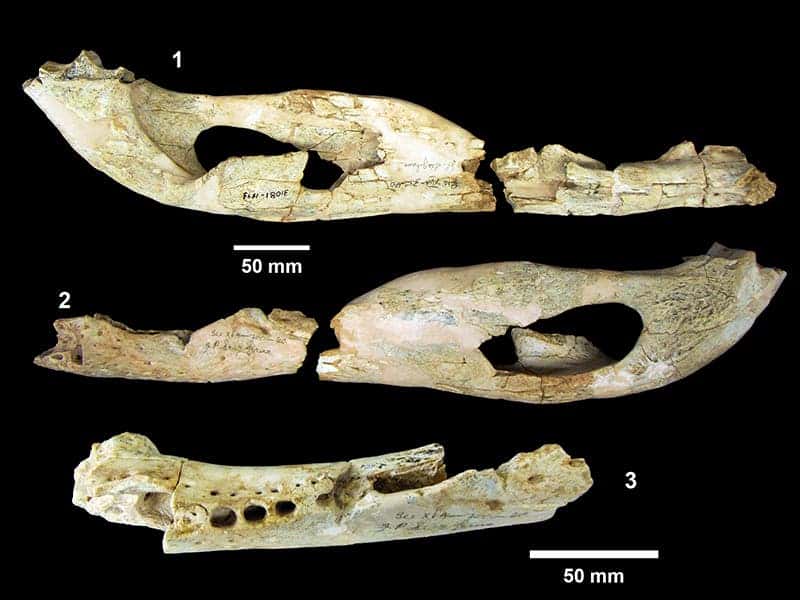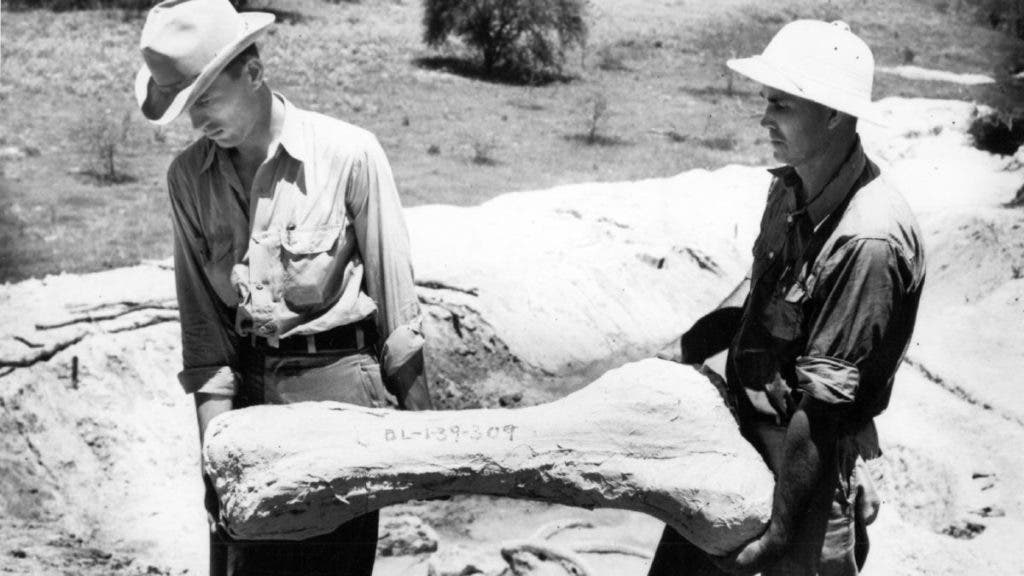A new study continues the work of amateur paleontologists from the Great Depression.
During the Miocene, the lone star state was a veritable Serengeti, one study reports, with rhinos, horses, antelopes, and elephant-like gomphotheres roaming all about. The fossils were discovered by unemployed Americans between 1939 and 1942. They took part in the State-Wide Paleontologic-Mineralogic Survey — a collaboration between the Works Progress Administration (WPA) and the University of Texas Bureau of Economic Geology — which gave unemployed people the chance to work on collecting fossils and minerals across Texas during the Great Depression.
Idle hands are the paleontologist’s tools
“It’s the most representative collection of life from this time period of Earth history along the Texas Coastal Plain,” said Steven May, the research associate at the UT Jackson School of Geosciences who studied the fossils and authored the paper.
Although those participating in the program were not trained paleontologists, they did manage to retrieve a treasure trove of fossils — tens of thousands of specimens strong. These fossils were then handed over to researchers at The University of Texas at Austin who, over the past 80 years, studied and stored them in various collections across the state. The majority of these fossils are now found in the Texas Vertebrate Paleontology Collections at the Jackson School Museum of Earth History.

Pictured: not palaeontologists. The majority of these workers had no geological or paleontological experience and were paid $0.20/hour through the WPA.
Image credits Steven R. May, (2019), P.E. / The University of Texas at Austin.
The fossils point to a “Texas Serengeti” which developed on the Texas Gulf Coast 11 million to 12 million years ago, according to a new paper. The ecosystem at the time could boast at least 50 different species including elephant-like animals, rhinos, alligators, antelopes, camels, 12 types of horses and several species of carnivore. In addition to this, the study also reports some fossil firsts that include a new genus of gomphothere, an extinct relative of elephants with a shovel-like lower jaw, and the oldest fossils of the American alligator and an extinct relative of modern dogs.
The study worked with fossils recovered near Beeville, Texas, during the State-Wide Paleontologic-Mineralogic Survey. This study isn’t the first to work with fossils in this collection, but it is the first to look at the entire fauna of the time instead of individual species. The results are helping us understand what ancient Texas looked like, says Matthew Brown, director of the Jackson School Museum’s vertebrate paleontology collections. However, the collection itself did not provide a complete image.
“They collected the big, obvious stuff,” May said about the 1939-42 exavations. “But that doesn’t fully represent the incredible diversity of the Miocene environment along the Texas Coastal Plain.”
The fossil hunters, lacking training in paleontology, tended to go for the biggest, flashiest fossils they could find. This skewed the collections heavily towards big mammals — things like large tusks, teeth, and skulls are easier to spot and more exciting to find than bones left by small species, so they claimed the lion’s share of attention and effort.
To make up for this, May used aerial photography and field notes from the WPA program to track down one of the original dig sites, on a ranch near Beeville owned by John Blackburn. There, he screened the site for any tiny fossils that the original digs missed, such as rodent teeth, to help him flesh out the ancient ecosystems and fauna in Texas.
“We’re thrilled to be a part of something that was started in 1939,” Blackburn said. “It’s been a privilege to work with UT and the team involved, and we hope that the project can help bring additional research opportunities.”
Many of the WPA-era fossils are still in storage, safely ensconced in plaster jackets. May said that he plans to continue to study the fossils as more are prepared.

Alligator mississippiensis skull fragments used in this study.
Image credits Steven R. May, (2019), P.E.
For more images of the fossils used in the study (they are quite pretty) and their descriptions, go here.
The paper “The Lapara Creek Fauna: Early Clarendonian of south Texas, USA” has been published in the journal Paleontologia Electronica.












